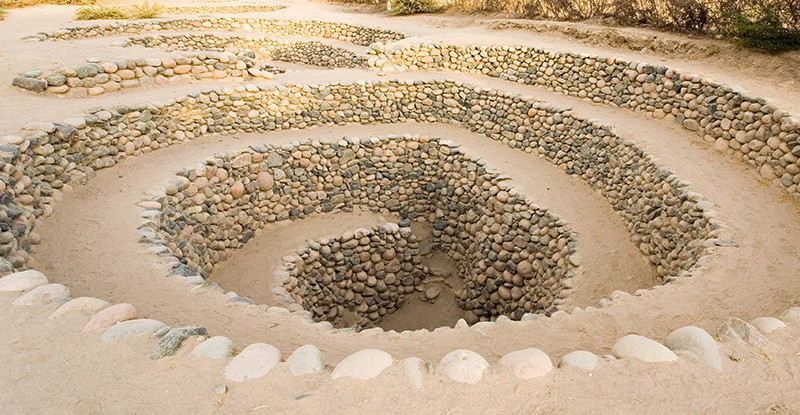The ancient aqueduct system still operates today, transporting 18 – 20 liters of water per second, helping 900 farming households grow fruit and vegetables in the Nazca Desert.

The majestic spiral holes in the Peruvian desert are actually part of a network of irrigation tunnels, helping people get underground water and survive in dry weather.

According to Science Alert, the Nasca Desert in southern Peru is home to many spiral holes dug deep underground, called puquios. These special structures cannot be dated using carbon isotope analysis. The Nasca people also did not leave any evidence about when and for what purpose they were built.

Strange spiral hole in the desert in Peru. (Photo: Pikselstock).
Rosa Lasaponara of the Institute of Environmental Analysis Methods, Italy, used satellite images to map the distribution of puquios and understand their relationship to nearby residential areas. The results showed that the spiral holes are located in a network of irrigation tunnels in the Nasca desert, helping people get groundwater. Lasaponara plans to publish his findings later this year in a paper titled ” The World of Ancient Nasca: New Perspectives from Science and Archaeology”.

“The puquios system helps exploit endless water resources throughout the year, contributing to promoting intensive agriculture in the arid valley area. The technology for construction and regular maintenance of spiral pits is based on great cooperation and efforts of the social organization system” , Lasaponara said.

Spiral holes work by transporting wind into underground channels, creating pressure to push water from deep underground water tanks to where it is needed. Construction of a project on such a large scale as the puquios system requires a comprehensive understanding of the geology of the area, as well as the variability of the annual water supply.
“The puquios system is the most ambitious irrigation project in the Nasca region, allowing water to be available all year round for use, not only for agriculture but also for household needs”, Lasaponara explained.






